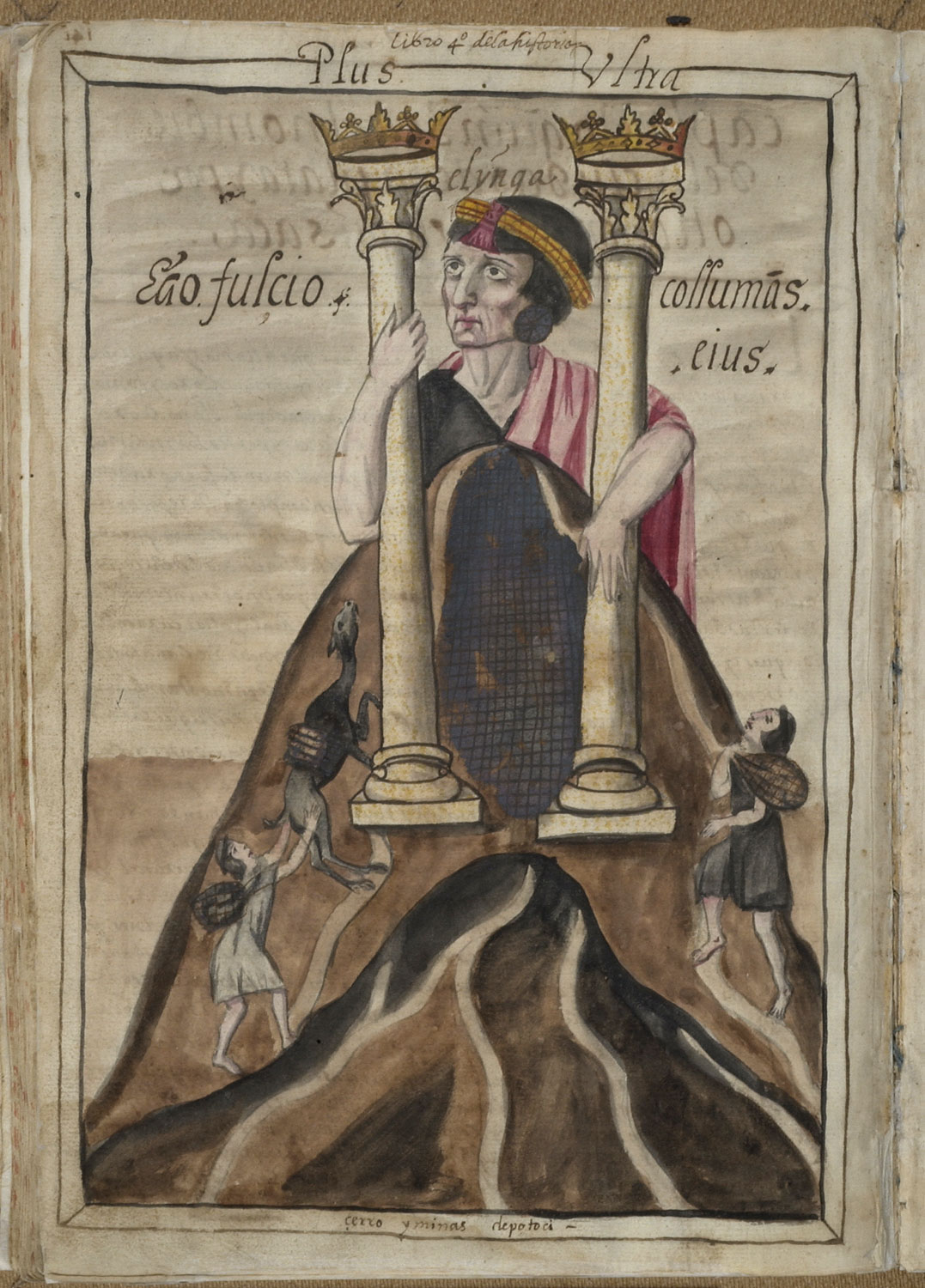Andean views of Potosí’s Cerro Rico evolved as its global fame grew. Felipe Guaman Poma de Ayala is best known for his Primer nueva corónica or ‘Letter to the King,’ a lengthy history of Inca customs and an indictment of Spanish misrule. In an earlier image from about 1590, Guaman Poma illustrated the Cerro Rico as a symbol of two intertwined empires. He paints an Inca holding the Pillars of Hercules with the imperial motto Plus Ultra (‘Farther Beyond’, i.e., beyond the Straits of Gibraltar to the Indies) of Charles V. The Inca’s Cerro Rico is ‘the support for your columns’. Guaman Poma included a modified version of this image in his 1615 ‘letter.’
The Pillars of the Inca at Potosi by Guaman Poma de Ayala
Felipe Guaman Poma de Ayala, Plus Ultra, el ynga: ‘I am the support for your columns’, c.1590. In Martín de Murúa, Historia del origen y genealogía real de los reyes Incas del Perú, Galvin manuscript courtesy of Seán Galvin, Image Getty Research Institute.
Kris Lane
Further reading
- Arzáns de Orsúa y Vela, B. (1965) Historia de la Villa Imperial de Potosí, 3 vols., edited by L. Hanke and G. Mendoza (Providence, RI: Brown University Press).
- Bakewell, P.J. (1985) Miners of the Red Mountain: Indian Labor in Potosí, 1545–1650 (Albuquerque, NM: University of New Mexico Press).
- Bakewell, P.J. (1987) Silver and Entrepreneurship in Seventeenth-Century Potosí: The Life and Times of Antonio López de Quiroga (Albuquerque, NM: University of New Mexico Press).
- Barragán Romano, R. (2019) Potosí global: viajando con sus primeras imágenes (1550–1650) (La Paz: Plural Editores).
- Bueuchler, R.M. (1981) The Mining Society of Potosí, 1776–1810 (Syracuse, NY: Syracuse University Press).
- Capoche, L. (1959) Relación general de la Villa Imperial de Potosí [1585]. BAE 122. Edited Hanke (Madrid: Atlas).
- Cole, J. (1985) The Potosí Mita, 1573–1700: Compulsory Indian Labor in the Andes (Stanford, CA: Stanford University Press).
- González Casasnovas, I. (2000) Las dudas de la corona: la política de repartimientos para la minería de Potosí (1680–1732) (Madrid: CSIC).
- Lane, K. (2019) Potosí: The Silver City That Changed the World (Oakland, CA: University of California Press).
- Mangan, J. (2005) Trading Roles: Gender, Ethnicity, and the Urban Economy in Colonial Potosí (Durham, NC: Duke University Press).
- Tandeter, E. (1993) Coercion and Market: Silver Mining in Colonial Potosí, 1692–1826 (Albuquerque, NM: University of New Mexico Press).





